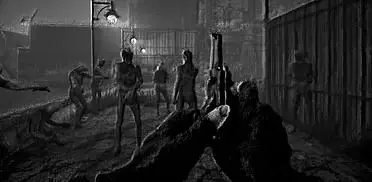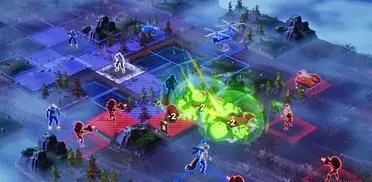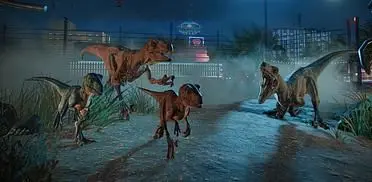As far as legendary movie franchises go, Indiana Jones hasn’t exactly been super active in the realm of video games despite a solid batting average. It has influenced icons such as Lara Croft and Nathan Drake, who gradually became bigger than the original adventurer in the eyes of the younger generations. After all these years, Indiana Jones and the Great Circle feels like an absent king returning and taking what’s rightfully his.
When Wolfenstein developer MachineGames was revealed as the team tasked with resurrecting Indiana Jones in video game form, the decision seemed like one of the most logical in recent memory. As far as Nazi-killing and first-person adventuring goes, they’re currently the best in the business. What no one could’ve anticipated, however, is an explosive mix of open-ended exploration in the vein of the Dishonored series, flexible stealth, and emergent gameplay akin to that of the Hitman reboot, and melee-focused combat lifted from the vastly underrated Chronicles of Riddick games (the latter are part of MachineGames’ roots).
The Great Circle starts off pretty safe: We get to relive the iconic opening of Raiders of the Lost Ark. It’s mostly there to show off the cutting-edge graphics and introduce the basics of movement and platforming. It’s also the sort of easy nostalgia-baiting that Hollywood has been overusing as of late. But I can’t deny it put a big smile on my face. From the start, it’s clear that both Todd Howard – who cracked the story and pitched this dream project despite his permanent position at Bethesda Game Studios – and MachineGames’ head creatives completely ‘got’ the visual language and tone that makes Indiana Jones’ movies so special.
A modern action-adventure game based on the series would’ve been quite easy to figure out. There’s a blueprint that just works after years of Tomb Raider and Uncharted doing what cinema’s greatest archaeologist has done on the big screen. Gradually, those series developed their own flavour and quirks. Instead of going down an ‘ouroboros’ path with this comeback, MachineGames dared to create an adventure that’s wider, slower-paced, and also deeper.
Mind you, set pieces and more linear sections abound, but Indiana Jones and the Great Circle isn’t content with simply letting players don the iconic hat and use the whip for a quick, frictionless rollercoaster ride. It’s a game that lets players inhabit the character. Instead of sprinting from one action sequence to a puzzle to risky platforming, Indiana must do proper research, use disguises, sneak around enemy bases, punch unsuspecting Nazis, and, simply put, do a lot of legwork before reaching the bits we’re familiar with.
No doubt, this will cause division among gamers and critics after a lighter affair, but in the long run, the vision is clear: Indiana Jones and the Great Circle wows and triumphs thanks to its most unique bits and daring riffs on design philosophies you wouldn’t have linked to this property at first. It all comes together so naturally that you have to wonder why no one had given this sort of action-adventure mix a go before.
After a couple of hours waltzing through the Vatican and solving all sorts of riddles and problems while disguised as a servant of God, the game gets into a flow that’s difficult to escape. The good news is that it never forgets those early beats, and this approach is extended into two major locations while the smaller, more linear sections take care of delivering an uncomplicated spectacle worthy of an IMAX screen.
The sheer amount of immersive sim DNA injected into this massive game (contrary to what Xbox’s too-safe marketing would suggest) also instantly justifies MachineGames choosing to go with a first-person view (except during certain actions) over the classic third-person angle that players always link to the genre. As a direct result, it all feels far more intimate, immersive, and visceral. You’re not playing as Indy. You are Indy. Plus, smacking and killing fascists – as highlighted by the studio’s Wolfenstein games – feels much better in first-person.
Conflict is to be avoided if possible though. The movies have repeatedly shown us that Indiana Jones, as enduring and persistent as he is, isn’t a master of melee combat nor an expert gunfighter. He simply tries to make the best of each situation, improvising on the spot. That spirit permeates not just stealth, but also combat encounters. Sure, you could fire some bullets, but that will only sick more enemies on you in most cases. You better try to sneak past undetected or practice your walloping skills. It’s all simple in practice thanks to a simple control scheme, yet it all feels tight and well-tested, with the Riddick games I’ve mentioned before being the closest point of reference.
When it comes to progression, there are only books that can either be found or bought from vendors. Each mission completed, secret found, and item cleared from your diary rewards ‘adventure points’ that are spent on skills learned from those books. Things are kept simple, and for the most part, they’re just enhancements of what Indy can do from the very beginning rather than new moves and abilities. This isn’t a game that gets lost amidst too many superfluous systems. Quite the opposite.
As for the narrative, it’s jam-packed with memorable characters and surprises while retaining the story structure and pacing we know and love even if it runs between 15 and 20 hours if you mostly beeline the main path and biggest side quests. I’d underline the importance of going in as blind as possible, as there are some delightful reveals and amazing sequences that the marketing material has smartly kept a lid on. Set between Raiders of the Lost Ark and The Last Crusade (remember that Temple of Doom was a prequel), The Great Circle firmly becomes part of the on-screen Indy canon as far as I’m concerned. The writing captures the core themes and overall tone incredibly well, and by the time the credits rolled, I was both delighted and sad, as I could’ve gone for another 10 hours of globe-trotting capers.
Troy Baker, arguably the biggest voice actor in the industry nowadays, excels as Jones. This was one of the most difficult voice-acting gigs ever, yet he brings a unique touch to the adventurer’s voice while perfectly maintaining the illusion that we’re just along for another ride with Harrison Ford. Likewise, Alessandra Mastronardi shines as Gina, a capable but not overbearing journalist, and Marios Gravrilis has the time of his life as villain Emmerich Voss. Last but not least, Tony Todd (may he rest in peace) has a quite fascinating role that I expected to be much more limited, but gradually becomes one of the strongest pieces of the giant puzzle.
Much less surprising is the graphical fidelity and satisfying performance achieved by MachineGames thanks to a fork of id Tech 7 known as Motor. Indiana Jones and the Great Circle is not only a gorgeous game, but also one that’s remarkably smooth (as long as you’ve got proper current-gen hardware), especially when compared to the recent streak of disappointing technical results from UE5 across many studios. This bodes well for DOOM: The Dark Ages next year. The advanced path tracing settings, however, are extremely heavy and should only be tackled by the beefiest of machines, as it comes across as future-proofing more than anything.
As expected from all games with the LucasArts/Lucasfilm in front of them (regardless of the development studio), the audio work is superb. Environments sound lively, each move feels tangible, and punches are as over-the-top as in the movies. Together with Gordy Haab’s pitch-perfect imitation of John Williams (he’s become an apprentice of sorts after his work on Star Wars Battlefront 2 and the Jedi games), the overall sound mix completes the illusion of stepping into a properly assembled Indiana Jones movie. Needless to say, the unforgettable whip sounds are in, and you’ll hear them plenty of times.
I could go on and write a few more hundred words, rambling about all the little things that add up and make Indiana Jones and the Great Circle such a captivating adventure and Xbox’s best first-party release in ages, but it’s a discovery that you, readers, should make for yourselves. It’s not often that we come across a big-budget video game based on a renowned IP that’s this playful and firm in its genre-bending convictions. There’s plenty of gas left in this old-school franchise, but if this is the last hurrah of classic Indiana Jones before an inevitable reboot in the future, it’s a damn fine one.
GameWatcher’s review was conducted using a PC code provided by the publisher, Bethesda.
For the latest gaming news, follow GameWatcher on BlueSky, check out our videos on YouTube, or give us a like on Facebook. We sometimes include affiliate links in our posts, which grants us a small commission, thank you.
INDIANA JONES AND THE GREAT CIRCLE VERDICT
Indiana Jones’ triumphant return to video games is a memorable adventure that gives fans everything they wanted while concocting a delightful mix of systems and design philosophies that no one had anticipated.
TOP GAME MOMENT
Stumbling into a hidden temple that leads to a 30-minute side romp which is every bit as well-produced as the main one.
Good vs Bad
- Immaculate attention to detail and cinematic presentation
- No one should miss Harrison Ford thanks to Troy Baker’s fantastic performance
- Looks great and performs great as long as you avoid path-tracing
- Open-ended approach to stealth and combat straight out of immersive sims
- An upgrade system that encourages exploration and puzzle-solving
- Linear sections are finely weaved into the more open overall structure
- The story is well-told and feels like a sixth big-screen instalment
- Memorable cast of characters that are expertly written
- Gordy Haab has once again turned in an excellent score
- LOD pop-in and shadow draw distances are poor even at the highest settings
- Small progress-halting bugs can force checkpoint reloads












